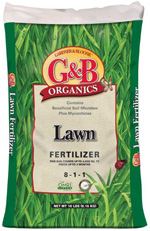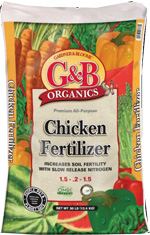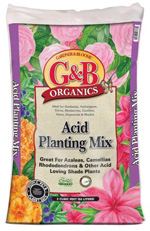|

    
 
|
 |
Featured Quote: "One kind word can warm three winter months." |

|
|
 |
|
 |
|
• The first commercial Christmas cards were commissioned in London, in 1843, by Sir Henry Cole, with illustration by John Callcott Horsley. President Dwight D. Eisenhower issued the first official White House card in 1953. • "Rudolph" was actually created by Robert May for Montgomery Ward in the late 1930's as a holiday promotion. The song was written later by Johnny Marks, and recorded by Gene Autry in 1949; it promptly sold about 2 million copies. • Christmas became an official national holiday in the USA on June 28, 1870. • Poinsettias are the most popular Christmas plant and are the number one "flowering" potted plant in the United States.  • Franklin Pierce put the first Christmas tree in the White House (in 1856), for a group of Washington Sunday School children. Benjamin Harrison is credited with starting the tradition of the White House tree, being the first to have a decorated family Christmas tree in the White House in 1889, and Calvin Coolidge put the first National Christmas Tree on the White House lawn (not in the White House) in 1923. • The first reported electrically lit Christmas tree was in December, 1882. The world's first practical light bulb was invented by Thomas Edison in 1879, and a mere three years later, in 1882, an officer of Edison's electric company, one Edward Johnson, electrically lit a Christmas tree for the first time. In 1917, after a tragic fire in New York City that was caused by Christmas candles, Albert Sadacca (fifteen years old at the time) invented safety lights for Christmas trees. Decorating a live Christmas tree outdoors became popular, and eventually moved to indoor trees. The outdoor lights also moved onto houses, and decorating houses in lights became (and has remained) popular. • Christmas trees are grown in all 50 states, including Hawaii and Alaska. • In 1979, the National Christmas Tree was not lighted except for the top ornament. This was done because of the American hostages in Iran. • According to the Guinness World Records, the world's tallest cut Christmas tree was a 221' Douglas fir (Pseudotsuga menziesii) erected and decorated at Northgate Shopping Center, Seattle, Washington, USA, in December 1950. |
 |
|
Most homeowners look at pottery as just a container to hold a plant on the patio or inside the home. But with so many unique shapes and sizes available today, more homeowners are using pots as decoration to add a piece of interest to the home or garden. Sometimes a pot can be the perfect solution to turning a space that is missing something into a dazzling focal point. Just like a water fountain or a piece of statuary, a well-placed piece of pottery can turn a boring area into a visual treat for the eyes. Consider glazed containers in unique vase or urn shapes. Tall and slender pottery can be especially stunning when placed in the right location. Instead of just putting out a sea of plants, consider how you can lead the eye to points of interest throughout your landscape or home by using a well-placed piece of pottery. We have a great selection of pottery. Come in for a visit and our staff of nursery experts will help you find the right container to transform your empty space into a visual delight. In the right setting, the perfect pot will look like a work of art. They make great gifts, too! |
 |
|
African violets are one of America's favorite flowering houseplants. And because they are easy to grow, they are accessible to all who want to add a little bit of blooming joy to their home. Even if you don't have a green thumb, they will reward your efforts with beautiful flowers throughout the year. Often considered queen of the indoor plants, the African violet was first discovered in Tanzania in 1892. Originally the flowers were limited to shades of blue, white and lavender, but thanks to years of hybridizing efforts many color variations are now available. African violets also vary in size and form. There are miniature varieties that grow to less than 6" in diameter, standard varieties which average 8-12" in diameter (but can exceed 18-24" when grown for exhibition), and trailing varieties, which can be grown as ground covers or as hanging plants. Ideally, African violets prefer the natural light of a south facing window but they can grow well with artificial lighting, too. The key is to provide them with 8-12 hours of light per day. For more even growth, it is helpful to rotate the plants a quarter turn each day. They grow best in temperatures between 65°F and 75°F, which will help promote quick flowering cycles and better absorption of plant foods. It is important to allow the soil for African violets to dry out completely between waterings. When watering, try to avoid watering the leaves, as this can leave behind unsightly stains. We recommend feeding them every two weeks, year-round, with a soluble plant food. This will keep the foliage a nice shade of dark green and help the flowers produce a more intense color. African violets are one of the most popular houseplants and very easy to grow. With good bright light and regular feedings, they will bloom joyfully all year long! We invite you to stop by soon and take a few home. |
 |
|
By Tamara Galbraith Soon after the festivities end, your once-fresh Christmas tree begins moving from Christmassy to crispy. No matter. When you're ready to take down the decorations, explore all your options of how to reuse or recycle. Many communities across the country offer a recycling program, whereby trees are collected and ground up into mulch for municipal use. Areas with lots of man-made lakes sometimes collect and sink old trees into waterways to slow erosion. Check with your local city government or county Extension Office to see if such a tree collection program is in place. Also, if you have the space and don't mind "the natural look" in your landscape, lay your old tree in a remote corner of your yard; it will make a great hiding and nesting place for birds, rabbits and other small creatures. If you have a compost pile, you can cut the branches into small pieces, and add them to the compost pile. It will take time, but they will break down to beautiful soil. Whatever you choose, be sure all the non-natural decorations, like tinsel and ornament hooks, have been removed. While sparkly mulch might have an interesting look, it's not very good for the environment. |

|
Fun for the family from Norad! Click Here to receive updates from the North Pole and play games. New content daily. Track Santa's progress toward your house this Christmas Eve! |

|
Ever look at a bag of plant fertilizer and feel like you were reading a foreign language? What does it all mean? What do those three numbers (different on every bag, it seems) really mean? What is NPK? With a short explanation, we feel certain that you will be armed and dangerous for your next foray to the garden center. If you look at a bag of plant fertilizer, whether indoor or outdoor, you will always see three numbers (i.e. 8-8-4). These numbers represent the macronutrients (substances that all plants need for healthy growth) that will be supplied by the fertilizer. The first number (8-8-4) is nitrogen (N). Nitrogen is necessary for leaf growth and health and is the nutrient most often lacking in garden soils. The second number (8-8-4) is phosphorus (P), which is needed for fruiting and flowering and strong root growth. The third number (8-8-4) is potassium (K). The plant uses this nutrient for stem and root development. It also helps plants resist diseases and better tolerate heat and cold. There are other ingredients in most fertilizers as well; these are called secondary nutrients. Most often you will see calcium (for cell formation and growth), magnesium (aids in formation of chlorophyll molecules) and sulfur (works with nitrogen to make protoplasm for plant cells) listed on the container. Many soils have sufficient amounts of these secondary nutrients in them. The third group of nutrients that are in most fertilizers is called micronutrients or trace elements. These should be given to plants in very small quantities; giving plants too much of these micronutrients can easily harm the plant. Some of the micronutrients often seen on a fertilizer bag are zinc, manganese and iron. Zinc and manganese help other nutrients perform well and iron is for chlorophyll formation. When choosing a fertilizer, choose the right food for the particular plant you are feeding. For instance, if you are feeding a blooming plant, such as a rose, you will want a fertilizer that is higher in the middle number, because that is the nutrient that encourages flowering. If you are fertilizing a lawn, you want to encourage leaf growth, so the first number should be highest. All plants need to have strong stems and roots, so they all will need potassium. Most fertilizers are labeled for the plants you should feed with them " Remember, more is not better--you can burn a plant by over-feeding (especially with nitrogen). Plants, just like people, occasionally need supplements to grow well. Fertilize your plants when needed with the correct fertilizer and they will reward you with growth, blooms and fruit--and they'll be better able to ward off insects and diseases.
|
 |
|
This is one of the easiest recipes you will ever make, and you will want to keep it as a holiday tradition!
What You Need:
Step by Step: In a slow cooker or crock pot, layer the ingredients as follows:
|
 click here for a printer friendly version of this page
click here for a printer friendly version of this page
 |
Written content © Garden Partners LLC, or respective authors. All Rights Reserved. Privacy Policy. All written content contained in this site is protected by United States copyright law and may not be reproduced, distributed, transmitted, displayed, published, or broadcast without prior written permission of Garden Partners, LLC. You may not alter or remove any trademark, copyright or other notice from copies of the content. |



